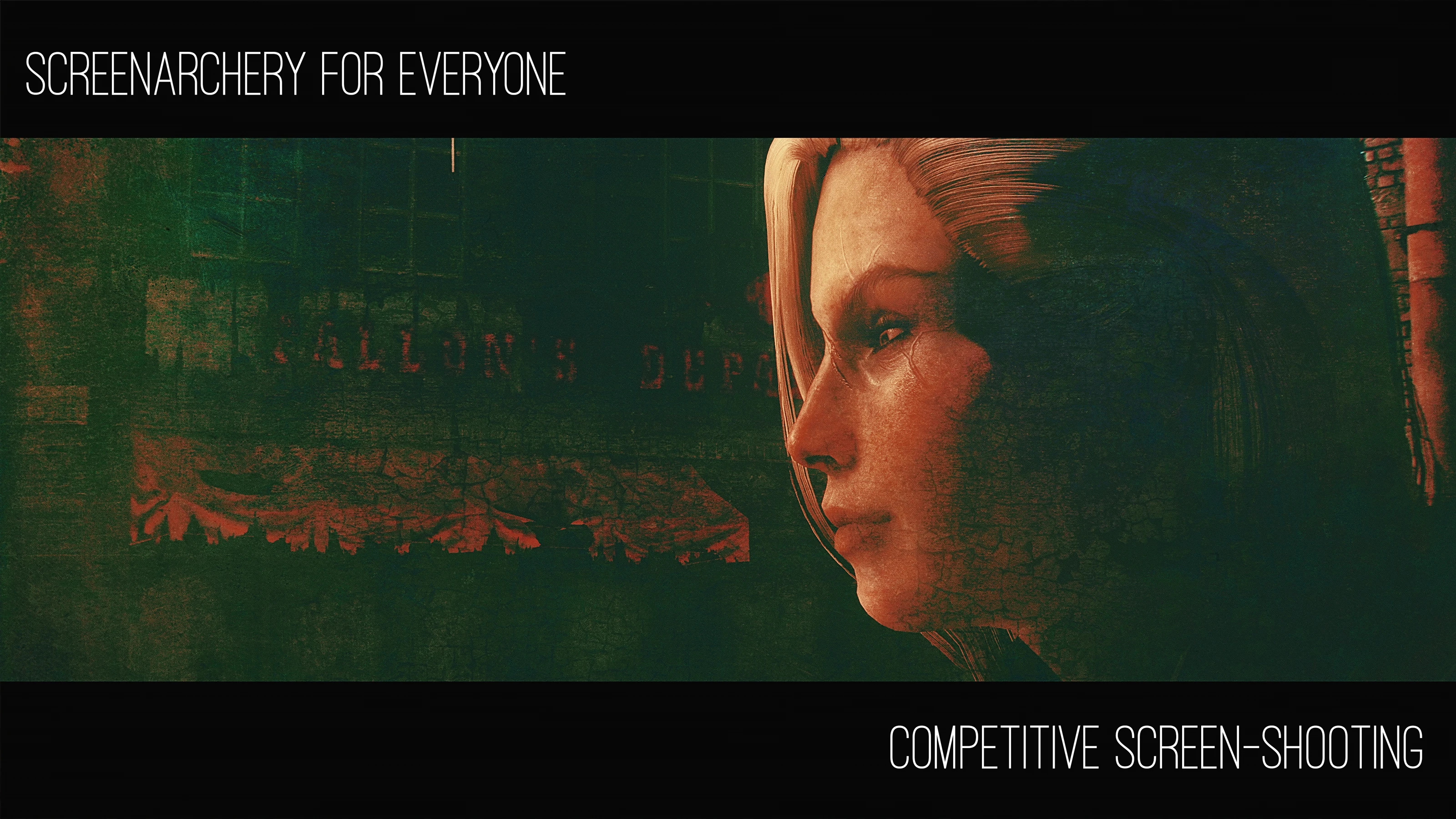
About this image
Greetings, DV here with a friendly public service announcement to all you screen-shooters. Nexus staffers BigBizkit and Pickysaurus have been working with me and my colleague Excellentium to conduct a screen-shooting contest (of sorts) right here on the Nexus. Public accolades and exposure for all participants and a chance at winning for-real-real valuable prizes to all selected finalists. Good times. Excellentium and I will be sitting on the judge's panel- which works well as he is an extremely generous person with a unique aesthetic viewpoint and I’m a cranky opinionated old goat. Between the two of us, I reckon we’ll be able to balance our respective aesthetic hang-ups and winnow out some ofthe most interesting screen-shots you all produce. To facilitate that process, I’ve been invited to write up a guide to contest screen-shooting (a.k.a. ‘how to git gud’). I stole liberally drew inspiration from this excellent guide to contest photography by David Schloss of Digital Photo magazine. Gently critical, funny, easy to read, and extremely helpful- I strongly recommend giving it a glance. Digital Photo’s other writing is also well worth checking out, as it is often as applicable to screen-shooting as to traditional photography.
This is a followup piece to the pair of articles I wrote some time ago about screen-shot composition in Fallout 4 and Skyrim, respectively. As I look back on those documents and those images now, I cringe a little at my own iffy composition in some of the demonstration images. Ah well, 'those who can, do; those who can't, teach.' So, like every tin-pot dictator, just do like I say and not like I do and everything will work out just fine.
Some forewarnings: I consider screen-shooting art. You there, in the back, with the crumbs on your Han Shot First t-shirt, I see you rolling your eyes! I never said most screen-shooting is good art, mind you. Screen-shooters at the mouth end of the 21st century are a little like photographers at the ass end of the 19th century. Our medium is considered terribly newfangled, gimmicky, incurably genre-ridden, probably just a passing fad, full of dumb kids, and essentially incapable of ever producing any real art (whatever that is). And then people like Alfred Stieglitz, Dorothea Lange, Ansel Adams, Ralph Eugene Meatyard and a zillion others came along and blew that pretentious clubhouse attitude right out of the water. As a former art teacher I believe with every fiber of my being that everyone can make art, and everyone can make good art- if they care for and about their own abilities. If you’ve ever found yourself wondering (or arguing) about what art is, or whether or not something might or might not be it, I heartily recommend both Clive Bell’s delightfully snarky essay on the subject, and Ellen Dissanayake’s straight-up brilliant anthropological take.
So sit your crumb-covered self down and learn how this ramblin’ fool recommends you git gud, put some art into your screen-archery, and give yourself a fighting chance in this here contest.
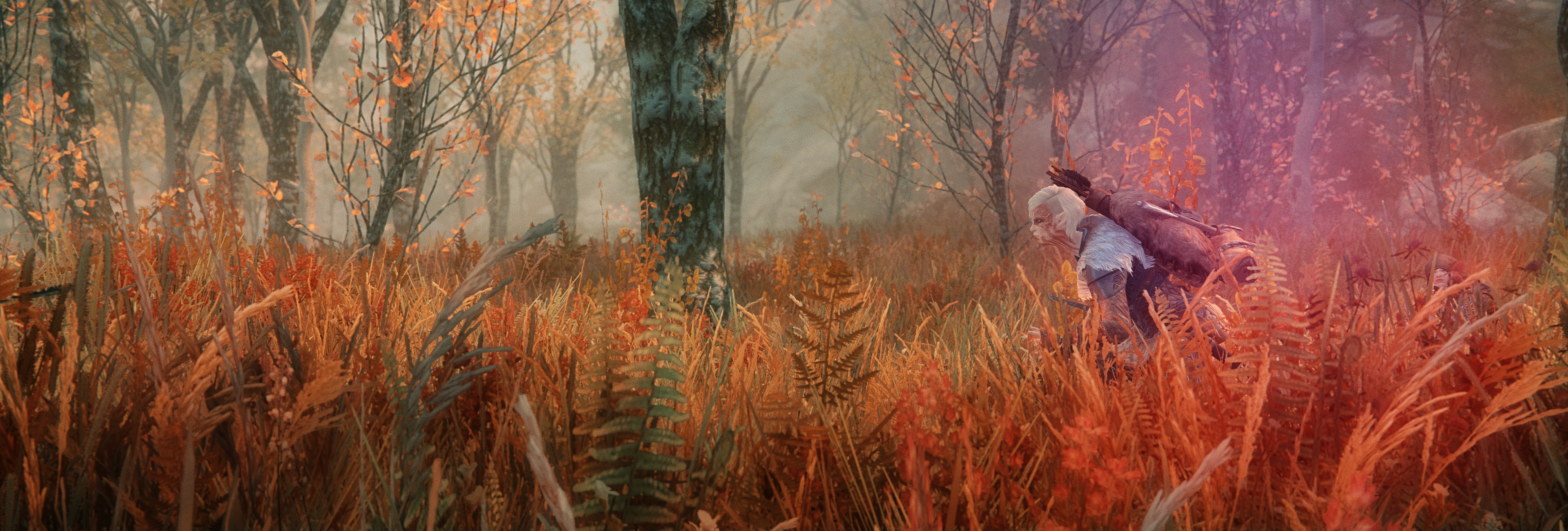
Play to Your Strengths
What are your strengths as a visual artist, and as a screen-shooter in particular? Do you have a good eye for color? Are you able to intuitively feel your way around satisfying compositions? Are you better at working with solo figures, landscapes, multi-figures shots? What do you enjoy making, and what of your work have other people specifically said that they enjoy viewing?
Often we don’t know our own strengths. The Nexus has a very polite media commenting culture. Unless you specifically invite critical feedback, most likely all you’ll get will be enthusiastic and generic statements of approval; “great job!” “mind-blowing work!” “that’s really hot!” and so on. It’s kind and lovely, but if you as a developing artist are looking for something more substantial to gauge what part of your craft you already excel in and what you could stand to improve upon, you’re going to have to ask, directly, many times over. ...And then you’ll still get a bunch of heartwarming, ego-boosting, extremely generous, basically meaningless compliments. It’s cool, people are just being nice. That’s the sort of thing that makes the Nexus such a pleasant place to share computer art these days, and I wouldn’t trade it for all the aesthetically critical brilliance and jerkery of the jury at the Biennale.
Bear in mind that your aesthetic orientation has nothing to do with the fanciness of your graphics card or the frames you can display per second. The only frame that counts is the one you capture. I've seen a lot of terrible screen art made with expensive machines and beautiful works done cleverly with an old-school setup. Your tools are useful, but nowhere near as important as the eye and the mind that guide them.
In a contest like this, shoot what you’re good at shooting. If the contest theme seems like a stretch, stretch your imagination until you feel something ‘click’. Then follow your inspiration to whatever you know you can do really well, and do it better than you’ve ever done it before.

For my part, I’m pretty terrible with multi-figure composition in Bethesda games. Part of that is my lack of patience with posing mods- necessary in many cases to get around the awkward, rigid
animations of the base games. Mostly though my eye is drawn less towards human-to-human (or elf or whatever) conflicts, relationships, etc. and more towards the interactions between human and inhuman elements within the game-world. A landscape on its own is OK to look at, I guess, but unless it’s very carefully framed, it carries no particular narrative weight- there is no reason to care about the image, no matter how pretty it might be. Stick a tiny humanoid figure into that landscape and suddenly the viewer has an emotional ‘hook’ to draw them into the image. The picture now tells a story about the relationship between this struggling/serene/anguished/content/whatever person and the landscape in which they have found themselves. On a technical level, this device ‘just works’, and I’ve used it over and over without exhausting it (though it does become a little boring when it’s the only framing device I rely upon...)
Shoot to Please Just One Person
In the words of Kurt Vonnegut, “Write to please just one person. If you open a window and make love to the world, so to speak, your story will get pneumonia.” That applies to screen-shots, as it does to all art.
Since this is a juried contest, you’ll need to please Excellentium and myself if you’re to improve your changes of getting that sweet pile of Steam bucks. So what do we like? Check out our respective personal catalogs and curated Community Theme compilations to get a sense of it. Have a care that what we like to see other people shoot is not necessarily what we ourselves like to shoot; imitation might be flattering, but it’ll get you nowhere with this jury. I’ll make this easy, to spare you some head-scratching and to spare myself the trouble of wading through a pile of earnest duplications of my own over-used visual tropes, and just tell you directly how I judge an image to be worth looking at more than once:
1. Creativity
2. Technical proficiency
That’s it. I don’t care whether you use neon colors or a muted palette, low-fi or high-fi visual trappings, dragons, robots, hooters, or paint chips. Present a novel and interesting way to look at something or someone within the game-world that suggests a novel and interesting way to look at the real world, do it with care and attention to detail, and I will like your shot.
There’s another way to take Vonnegut’s dictum in a contest setting like this. You can always say ‘screw you’ to the judges, and just shoot whatever you know you can shoot well, better than anyone else can shoot whatever it is you’re shooting. Shoot to please just one person, be it yourself (boring, but reliable), your mom, your best friend, your high-school math teacher, your grandma, whoever. Trust in your creativity to show you a way to make an image that appeals to their aesthetic preferences without compromising your own. Do that well and the art you make will be a million times better and more fulfilling thanjust trying to please me, a random judge of a random contest.
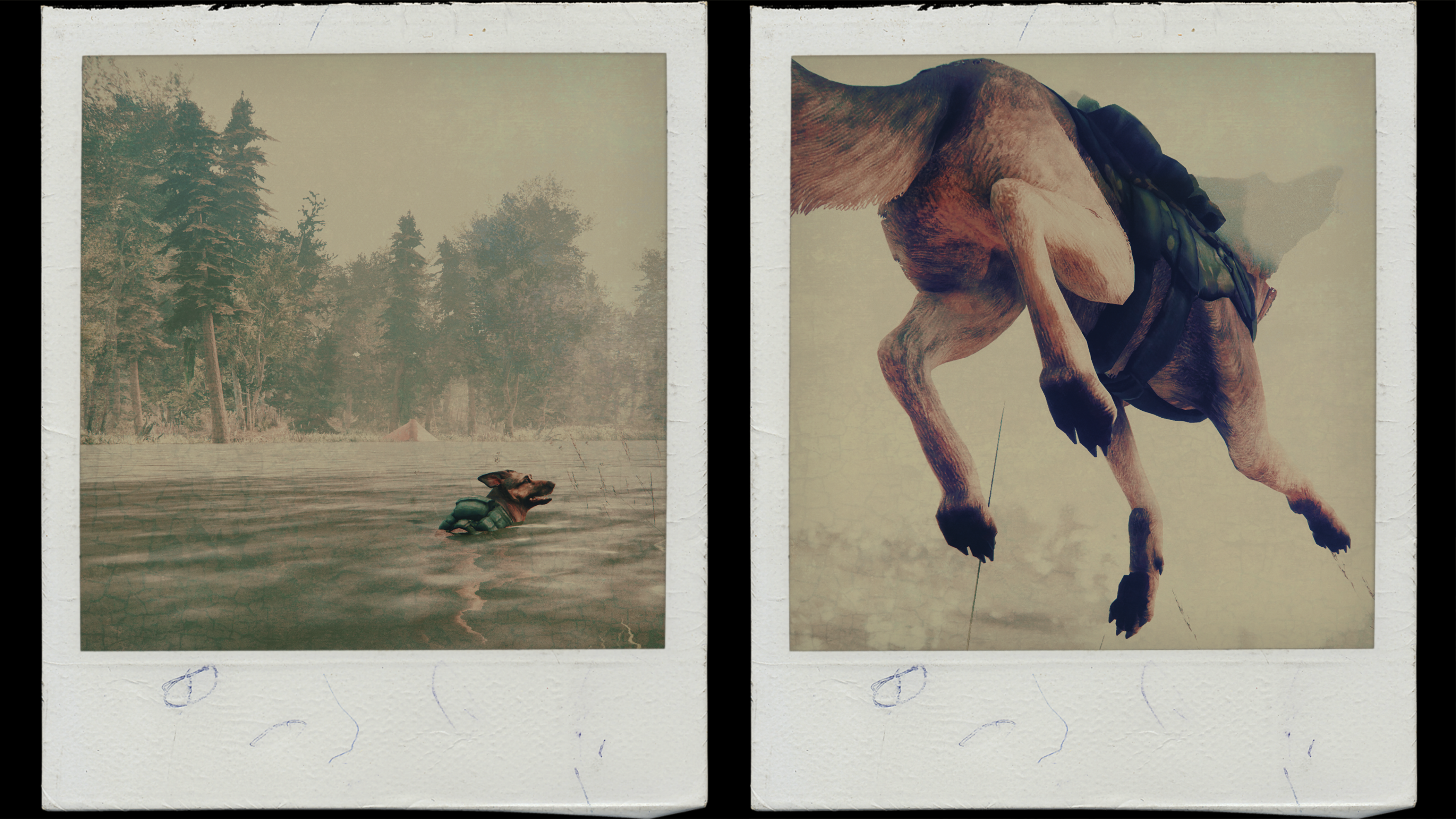
The visual setup for this diptych was inspired by a fellow archer who beautifully mashed up a set of some of my favorite modded visual stylings for the game. More background: My mother is a fiber artist, who fostered in me an enduring affection for depth and diversityof texture (in the real-world generic sense, not just the normal maps that get slapped onto 3D objects in a game). I love the palpable texture of chemically developed film- grain, the way the light catches on old print stock, etc.- and I love how l00ping has lovingly, faithfully translated that depth of texture into his ENBs. But this pair of shots isn’t for MagdalenaA, or for l00ping, or for my mother; it’s for the curator of an installation of Robert Wilson’s ‘14 Stations’ at Mass MoCA that I saw when I was a teenager, and which permanently blew my mind about the potential of what art could be. I’m not saying these are particularly good shots, but the physical spatial aesthetic choices of that Mass MoCA curator who interpreted Wilson’s enormous installation piece informed the visual spatial aesthetic choices I used in composing and meta-composing these images.
Consider Your Audience
This may sound directly contradictory to the foregoing point, but bear with me here. The internet is not a screen-shooting medium so much as it is a screen-sharing one. You're already taking pictures of the sorts of things that catch your own, personal, private, unique eye, and tinkering, selecting, deleting, and arranging them at your leisure, on your own computer. When you bring your images into the public eye, it's to show them (off) to other people. Have a care to consider what they might be interested to look at, and what they’ve already seen a million times over. Consider how to make your images noticeably distinct from others in the same genre.
Be proud of your individual talents and unique viewpoint. Imitation of other artists is fine practice, but the result of all that practice should feel like something you, and only you, could create. Whether you care about the implicit popularity contest of endorsements and view-counts, are looking to showcase your own techniques within a niche group of sub-genre aficionados, shake up the community with fresh or under-represented perspectives, solicit feedback for your works-in-progress or steadily improving artistic skill-set, or just love the hobby, love what you do, and are proud to show it off to anyone who also appreciates that sort of thing, always and only show your best work. Your best is always worth looking at. Not your best... probably isn't.
I see a lot of the same genre subjects repeated over and over (and over) in screen-shot imagery: paramilitary folks in tac-ops gear, oddly proportioned women in uncomfortable-looking clothing, indifferent architecture, dragons, porn, uncomfortable tac-ops dragon porn, etc. Content-wise, I suppose it's fine to shoot the same sorts of things other folks shoot- I've certainly made my own share of pinups and badass-with-a-weapon portraits- but how you shoot it makes all the difference in the world. Again, you have your own unique eye; use it! Practice being derivative at home and showcase your originality in public.
For a contest, that originality is crucial if you want to stand out from the crowd and give yourself a better chance to take home the prize (and the bragging rights!) Think about the sorts of things that other screen-shooters would be likely to do, and don't do them. Or do them in your own unique way. Even if you're just starting out or are not terribly confident in your own abilities, try something you've never tried before, something that seems slightly more ambitious than you think you can realistically handle. Maybe it won't work, or won't work the way you hope it might. No sweat, it's only a game. Creative failures are always interesting; failures due to lack of creativity are always terrible.
Another thing to consider is how you contextualize your images. In addition to including more images in a scroll, you can actually use the 'about this image' posting window to, y'know, write something about your images. This past winter's Best of the Rest Community Theme was tremendously (relatively) popular in part because many people took the time to share in their contributions something about their creative process, personal aesthetic, and the way in which their real lives intersected with their screen-shooting. It was powerful, heartfelt, and consistently interesting reading. Don't be shy if you're not confident in your mastery of the illogical hodge-podge of loan-words, dodgy grammar, and arbitrary sentence-construction that is English. Just write with whatever language you feel best expressing yourself in and we'll do the leg-work of translating.
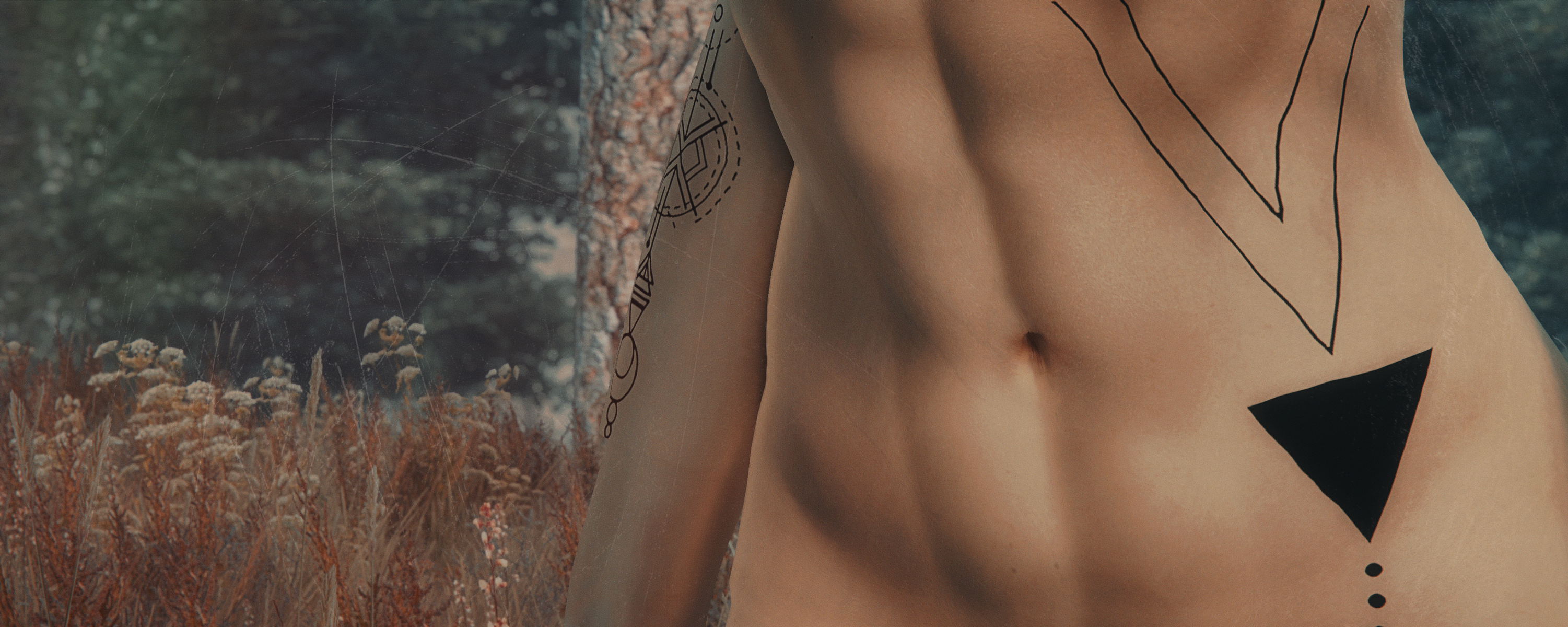
There are a million screen-shots of naked ladies out there. While I’ve pages of unwritten bile to spend talking smack about crummy digital sexism, I’m more interested here in the uninteresting and uninspired visual vocabulary pinup artists often find themselves relying upon. There are so many ways to photograph beautiful bodies. If you look at the work of film photographers who actually find real-life bodies beautiful, you’ll see those techniques in constantly living, growing, maturing, mutating action. Here’s a slightly different take on the genre-standard ‘muscular, smooth-skinned, warrior woman bad-ass’. I’ve zoomed in to those hella cut abs, added some texture in the form of simulated lens scratches, grain, and simulated print stock damage, and framed the shot in such a way that the tattoos, background vegetation, and scratch patterns reflect and refer to the lines of the model’s body. Though this is a nude (the part of the model we can see is unclothed, at least) and the aesthetic focus of the image is the natural beauty of this person’s body, the feminine existence of her body is not deliberately sexualized. Whatta concept. Bodies can be more interesting than just objects to be horny at, even when they belong to the gender(s) you happen to enjoy getting horny with.
Simplify, Simplify
Think about how you present your images in the context of the whole. Are you shooting twelve different angles of the exact same character in the exact same pose in the exact same location with the exact same lighting? That might be a little exhausting to look at. For the purposes of any public display, visual fatigue can reduce the individual power of the single best shot of that set by comparison with the relative mediocrity of its surroundings. This goes for subject matter in a general sense as well as a specific one; if you’re going to shoot a pinup, bad-ass-with-weapon, or other well-worn genre subject, find a brand-new way to do it or your picture will be lost in the collective haze.
You can, of course, play with the tension of similarity to good effect- multiple images of the same character in the same pose in different settings; several shots of the same setting at different times of day, different color schemes, etc. As always, the thoroughness, attention to detail, and commitment to the underlying thematic elements tying the shots together will result in a more cohesive, effective, impressive result. Do more with less.

I really like how these three shots work together as a triptych. While this is absolutely the sort of repetition of physical elements within a set that I just decried a minute ago, I think that in this case the repetition works. Here’s why: While each image includes the limping man with a crude deer mask and a real, live mutant deer, in each iteration their spatial relationship within the frame and relative scale is dramatically different. Each image uses a different compositional arrangement based on the Rule of Thirds. By putting these images of two consistent characters engaged in inconsistent metamorphoses in sequence, it implies some sort of relational narrative- even if that narrative is surreal and open to interpretation. Each individual image tells a weird little story about these characters, and when you put them together, the story gets even more dreamlike. To get to these three shots, I threw out well over a dozen others. Most were OK, some were terrible, and a few were almost, but not quite, good enough. A whole page of man-and-deer would be irritatingly self-indulgent; one triptych seems about right.
Use ENB (or ReShade [or Both])
Yeah whatever, smug artsy-fartsy blah blah blah. Just get to the l33t screen-archery tips already! OK, fine: technical proficiency will be rewarded, technical ineptitude will be quietly ridiculed. This does not mean that only those obnoxious few with excessively powerful computers stand a chance at carrying the prize (thus further exacerbating the hellish economic inequality of this our modern age). It’s about how well you use the absolutely free visual post-process shaders and image manipulation software available to everyone (who can already run these games). If you’re having trouble with frame-rate, turn your ENB and/or ReShade off while you compose your shot, and then turn ‘em on to shoot it. Those functions are already tied to hotkeys, so what are you waiting for?
Another way to get your image crisper is to increase your resolution in the game’s .ini files. If you’re reading this you presumably know how to use the internet, so I’ll trust in your ability to figure out how to do that if you don’t already know. This will probably wreck your frame-rate (until you revert the resolution settings) but since this is something of a contest, presumably you’ll be wanting to pull out all the stops anyway. Again, you can always turn off your ENB/ReShade in-game to regain frame-rate, then flip ‘em back on again to land your shot.
Tinker with your ENB/ReShade. Change values using the in-game GUI. Change things everyone warns you never to change. Don’t just use the stock standard setup. Add LUTs, change LUTs constantly, make your own LUTs. Turn the black bars back on and make them gigantic. Layer a ReShade on top of an ENB and see what happens. Mash files from one ENB into the basic framework of another. Experiment! Your computer is a free country and you are its citizen. If you save backup copies of good-looking setups, there’s no progress lost in messing about as you go. This is, after all, supposed to be a game, no?
Don’t be afraid of using good-looking, performance-intensive, scary complicated ENB/ReShade setups. Try them out before deciding that complexity and challenge are just not your bag. You’re already on a modding website that specializes in Bethesda games, so clearly you’re pretty comfortable with obtuse, time-consuming, complicated systems that only 'just work' part of the time. Consider it a game within a game to learn your way around the initially incomprehensible shader GUIs, gradually level up your proficiency on the HSL skill-tree, descend into perilous dungeons of code, and eventually shout the evil dragon of inter-community bickering to death and herald a golden age of visual artistry with your very own bestest ENB ever. Or whatever. Just use some #@$%! anti-aliasing for once people, I mean geez.
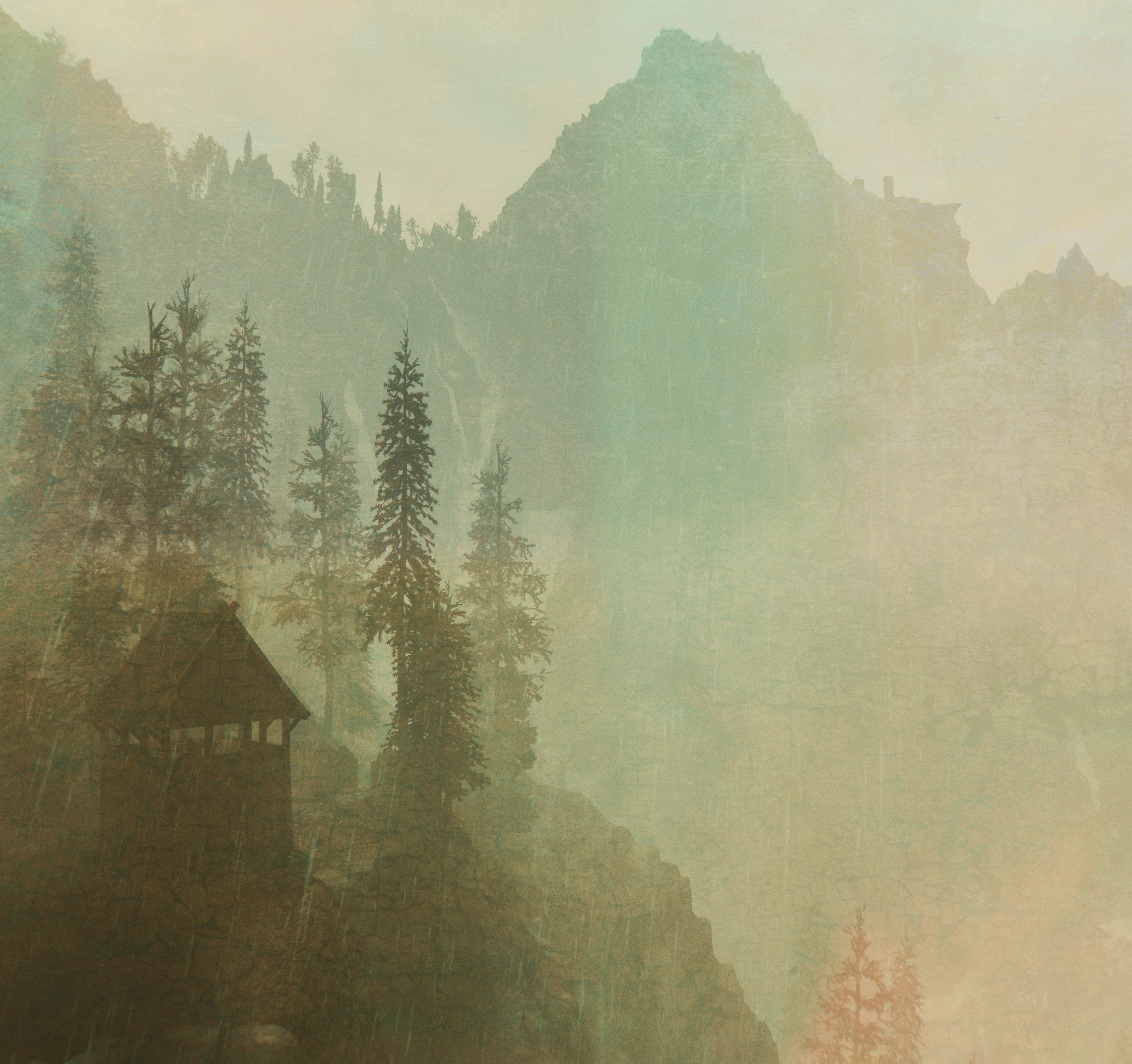
Inspired by Andrei Tarkovsky’s Polaroid photography, the INSTA.LIGHT ENB provides a framework for creating deeply textural, analog-style imagery in Skyrim SE. But it can be used to evoke artistic traditions beyond Tarkovsky’s late-century modern/post-modern grit. I tinkered with the exposure and lens values in the ENB to create a series of pictures that were inspired in equal parts by the Nanga scroll paintings of Ikeno Taiga and the heavy oil seascapes of Western artist J.M.W. Turner. The INSTA.LIGHT lens and bloom effects catch and amplify the light as it scatters across the screen, recalling both Turner’s painting techniques for diffuse lighting and Taiga’s use of blank space to suggest clouds, distance, mist, and time. This is a picture of a video-game, but aesthetic elements from traditional media are just as applicable here as they are anywhere else. The image above steals more Taiga elements, this one cribs more from Turner (but does not display as well in the Nexus scroll format).
Everything Else
You should really take a look at that photography article I mentioned at the beginning. It touches on so many things that so many screen-shooters do without, apparently, thinking. It would behoove you, me, and all the rest of us to hold the stuff David Schloss brings up in the fore-front of our minds when preparing to share our images with one another.
There’s a lot I’ve left out of this essay. Color balance, tonal consistency, photo-stitching, post-process editing with GIMP or Photoshop, and so on. Each of those is an essay and a tutorial in and of itself. For now, all of this advice basically boils down to: honor your own creativity.
Don’t just fire off a bunch of ‘random’ shots and call it a day- that’s disrespectful to the part of yourself that found those images interesting, beautiful, and worth capturing in the first place. Take the time to shine those beauties up until we, your audience, see what you see, care about what you care about. This art thing is deeply fun, but deeply personal- even when on the surface it seems to just be about dragons and hooters and contests.

Good health and good luck, y’all.
DV






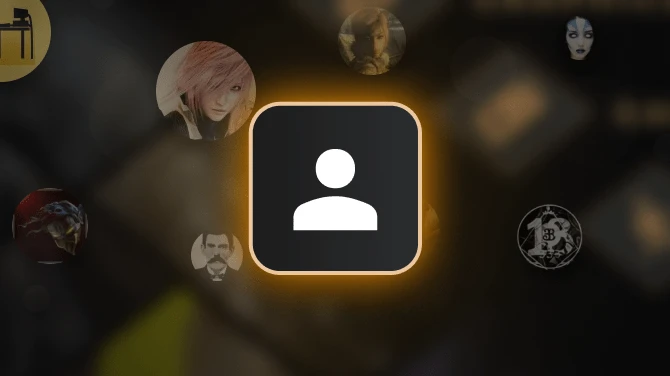
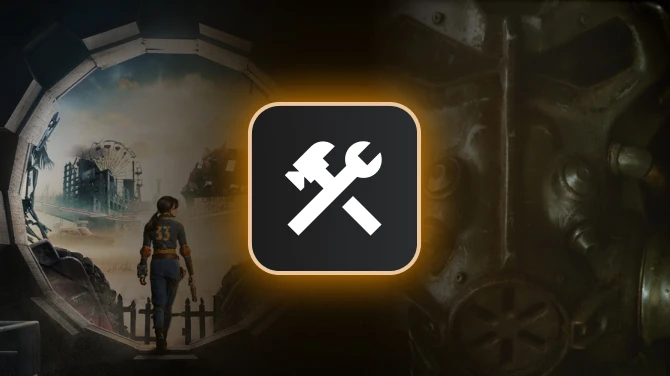

20 comments
A late thank you for the link to that other article, already read it and a few others on that page too.
I hope basic/unfiltered content is also seriously considered for every aesthetic point also
Everyone has a different set-up, for whatever reasons.. But as long as the 'eye' is still considered, as much as hardware & software..
hmm i guess ill join this contest goodluck to all :)